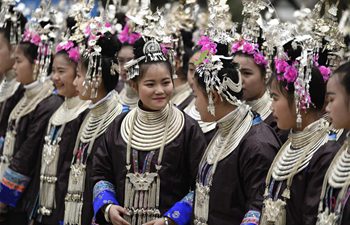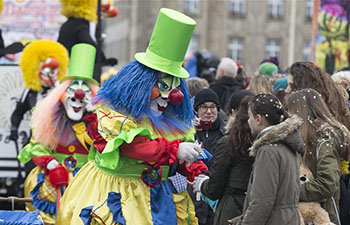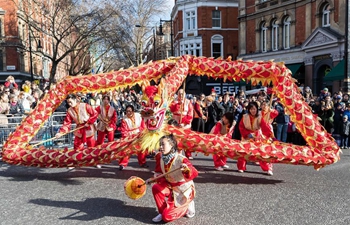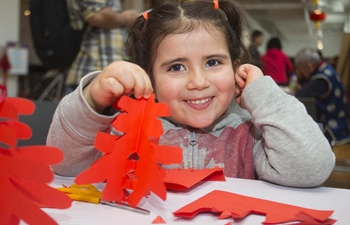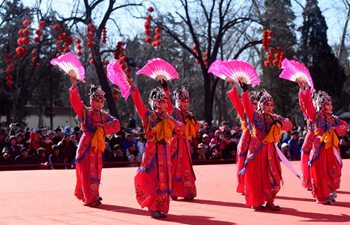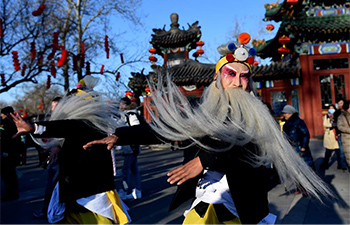CHONGQING, Feb. 20 (Xinhua) -- In an abandoned house in southwest China's Chongqing Municipality, Zhou Zhihou and his peers carefully cut pictures on wood.
The walls in the house are full of woodcut paintings. In the middle, a wood bucket for rice-steaming stands on a long table, and paintbrushes are squeezed in the bucket's holes.
Zhou, 72, is busy preparing a special gift for relatives and friends for this year's Spring Festival: a woodcut painting featuring a dog, to coincide the Year of the Dog.
Zhou, a farmer in Shangchang Village, only picked up painting last year.
"I am kind of famous in the locality these days," Zhou said. "I even have my own studio."
Zhou is among a dozen successful farmer painters who made their name by drawing rural life on woodcut paintings in Shangchang, about 100 km away from downtown Chongqing.
Woodcut painting originated during the Ming Dynasty (1368-1644). Painters cut pictures on wood blocks, put colors on them, before pressing paper against the blocks to make paintings. A piece of block can help print scores of pictures.
The painting business has been good in Shangchang, with tourists coming to admire the craft and buy paintings. Government authorities are planning to promote woodcut painting in other rural localities in Chongqing to boost local tourism.
Zhou's teacher Li Yili, a woodcut painting master, came to Shangchang in August to help teach the craft. "I just told them to draw whatever they saw," Li said.
Peng Shuzhen, another farmer in Shangchang, said that she drew many aspects of rural life.
"I drew what I saw: playful children getting bitten by crabs by the river, people drinking home-made wine with reed straws," said Peng, 69. "It's not that complicated: a circle is the head, and two dots are the eyes."
The idyllic beauty of the countryside, dancing elderly, left-behind children, and building new houses are all good content for the paintings.
"The farmers' paintings are not restricted at all," said Li Yili. "The colors are bold, and the images are simple and fun."
The paintings soon became a fad among visitors to Shangchang Village. In just half a year, Zhou, who made ends meet by selling eggs in the village, made almost 7,000 yuan (1,110 U.S. dollars) by selling his paintings.
"Woodcut paintings not only transformed the fortunes of Shangchang, but also enriched people's lives," said Cai Chunqi, the village Party chief. "In the past, pasttime for locals mainly meant playing poker, but now the very thing on everybody's lips is woodcut painting."






